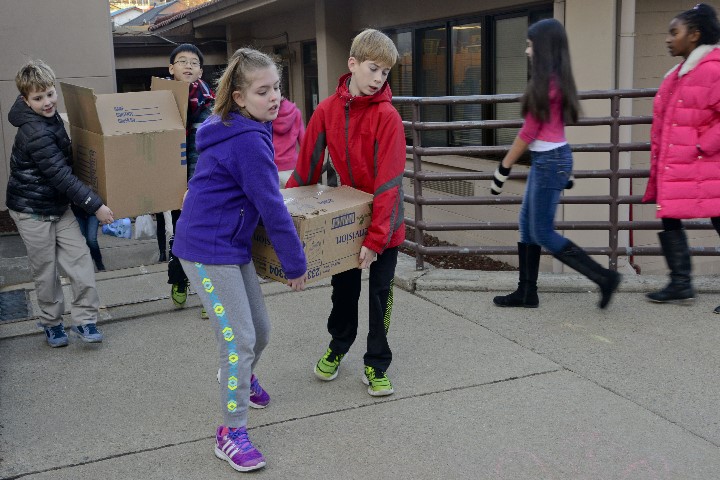In Fulton, Illinois each homeroom at River Bend Middle School received $100 to give back to the community. The only catch is that it had to have a personal connection to students.


In Fulton, Illinois each homeroom at River Bend Middle School received $100 to give back to the community. The only catch is that it had to have a personal connection to students.
Since the beginning of the school year, Principal Kathleen Schipper has allocated Wednesdays for working on community projects. She had only one stipulation for the students’ $100 contribution: Make it relatable. She didn’t want the donations to go toward a broad effort. Rather, she wanted a personal connection. The projects were kept secret—even Schipper had no idea what the students were doing.
Donations were made to cancer research and the nearby White Oaks Therapeutic Equestrian Center, which provides programs to the physically and mentally disabled. Two homerooms made fleece blankets for a children’s hospital and the Harbor Crest Nursing Home. Eighth-graders made a blanket for a therapy dog. The Student Council filled boxes with supplies and amenities for new students on their first day of school. A 6th-grade class donated money to the Wounded Warrior Project and shared stories of loved ones in the military.
Some classes became inspired by their peers’ personal tragedies or maladies, donating, for example, to brain tumor awareness.
Teachers report that students seem to have a clear concept of volunteerism and philanthropy. Special Education teacher Connie Hoffman sees the school going forward with community involvement. “This is not a one-shot thing,” she told the Clinton Herald. “Mrs. Schipper would be proud.”
Schools are full of rules, rewards, and consequences. All of these are in place in order to bring children to the place where they freely and willingly choose the good without the need for enticements. Yet sometimes schools neglect to give children this freedom and responsibility.
Principal Kathleen Schipper is nurturing character in her students by providing the opportunity to do good in what Institute for Advanced Studies in Culture founder James Davison Hunter, calls moral autonomy. Hunter explains it this way in The Death of Character: “Character implies the moral autonomy of the individual in his or her capacity to freely make ethical decisions. The reason, very simply, is that controlled behavior cannot be moral behavior for it removes the element of discretion and judgment.”
Teachers can give students this moral autonomy in designing service projects or gifts for the good of the community with this Advisory in Action lesson from Learning to Give.